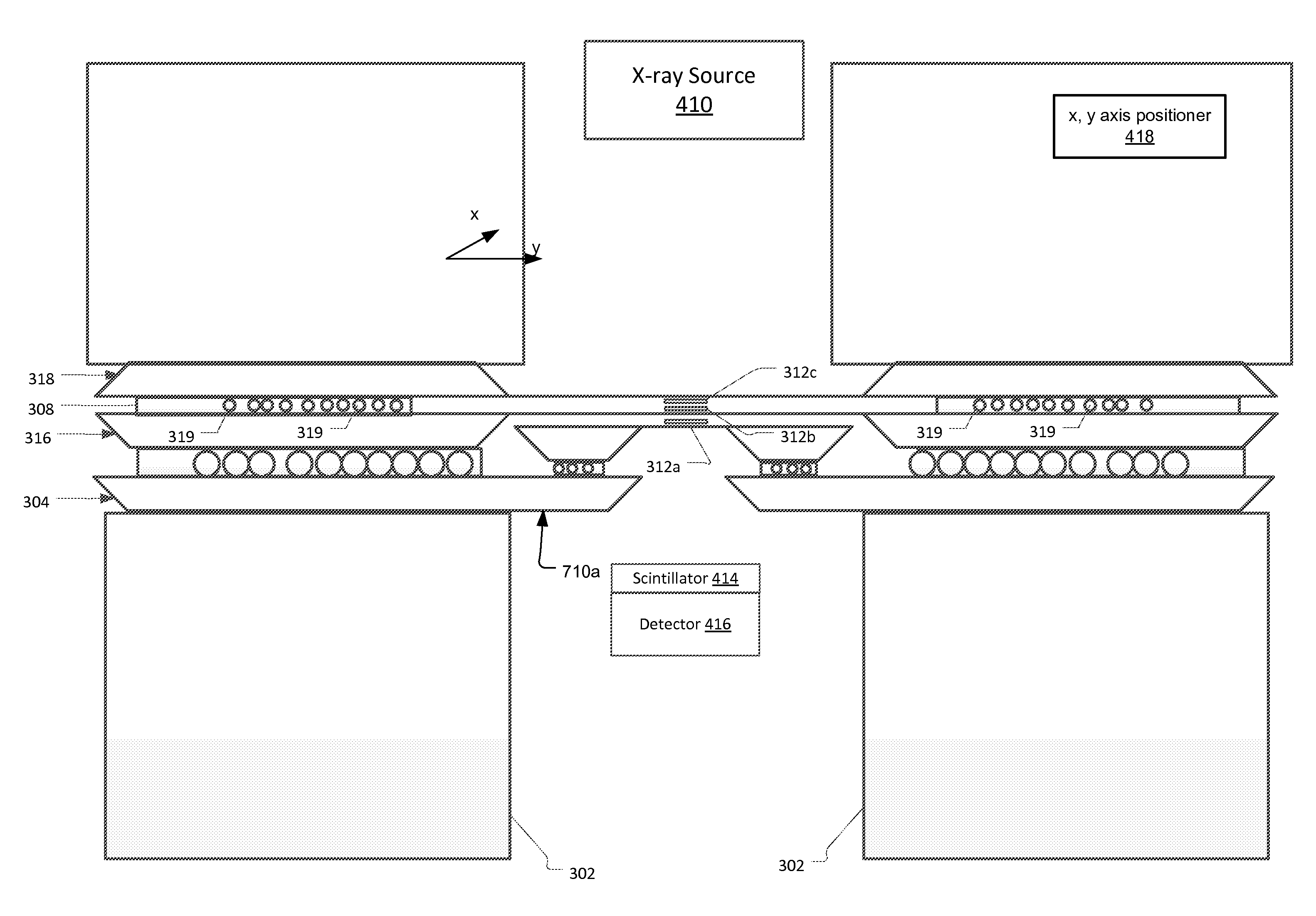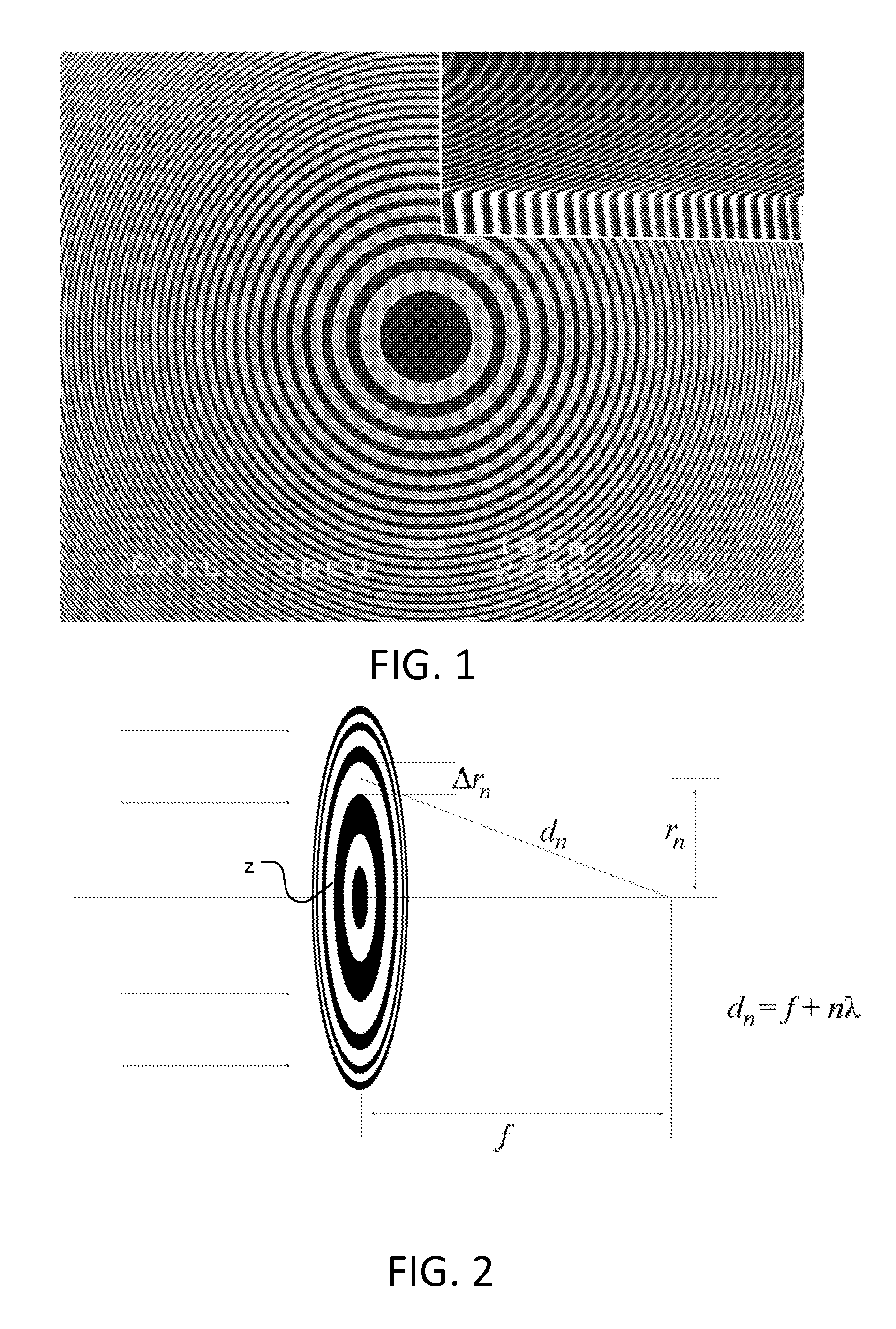Compound X-ray lens having multiple aligned zone plates
- Summary
- Abstract
- Description
- Claims
- Application Information
AI Technical Summary
Benefits of technology
Problems solved by technology
Method used
Image
Examples
Embodiment Construction
[0034]FIG. 4 shows an x-ray imaging system that has been constructed according to the principles of the present invention.
[0035]The system has an x-ray source 110 that generates an x-ray beam 112 along the optical axis 122. In the current embodiment, the source is a beamline of a synchrotron x-ray generation facility. In other embodiments, lower power sources are used, such as laboratory sources. Such sources often generate x-rays by bombarding a solid target anode with energetic electrons. Specific examples include microfocus x-ray sources and rotating anode sources.
[0036]The x-ray beam 112 is preferably a hard x-ray beam. In one embodiment, its energy is about 10 keV. Generally, the beam's energy is between about 2 keV and 25 keV. These higher energies ensure good penetration through any intervening coating, e.g. fluid layer, on the sample 10.
[0037]The condenser 114 collects and focuses the x-ray beam 112 from the source 110. For the full field imaging setup, a suitable illuminati...
PUM
 Login to View More
Login to View More Abstract
Description
Claims
Application Information
 Login to View More
Login to View More - R&D
- Intellectual Property
- Life Sciences
- Materials
- Tech Scout
- Unparalleled Data Quality
- Higher Quality Content
- 60% Fewer Hallucinations
Browse by: Latest US Patents, China's latest patents, Technical Efficacy Thesaurus, Application Domain, Technology Topic, Popular Technical Reports.
© 2025 PatSnap. All rights reserved.Legal|Privacy policy|Modern Slavery Act Transparency Statement|Sitemap|About US| Contact US: help@patsnap.com



